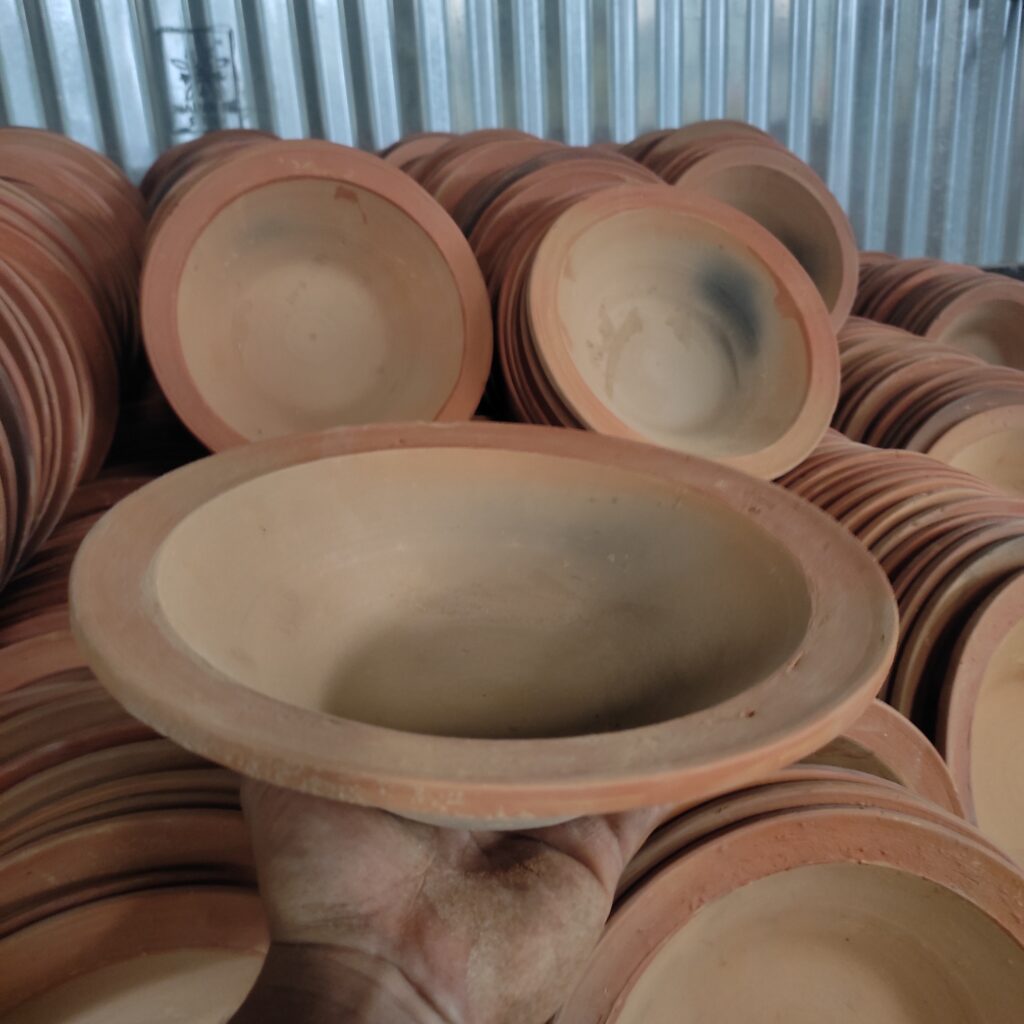
1-liter terracotta plate is a practical and traditional vessel for making curd (yogurt). Terracotta, being porous and able to maintain a consistent temperature, is well-suited for this purpose. Here’s how you can use a 1-liter terracotta plate for curd making:
Materials Needed:
- 1-liter Terracotta Plate: This plate should be made of natural, unglazed terracotta. The porous nature of terracotta helps in maintaining a stable temperature for the curd to ferment.
- Milk: You’ll need fresh milk, preferably whole milk, to make the curd.
- Curd Starter: You can use a small amount of previously prepared curd as a starter culture. Alternatively, you can use a commercial yogurt starter culture.
Steps to Make Curd in a 1-liter Terracotta Plate:
- Clean the Plate: Ensure that the terracotta plate is clean and free from any contaminants. If it’s a new plate, it’s a good idea to soak it in water for a few hours and then let it air dry. This helps in preventing the plate from absorbing too much milk initially.
- Boil the Milk: Heat the milk in a separate pot until it reaches a temperature of about 180°F (82°C). This pasteurizes the milk, killing any unwanted bacteria that might interfere with the fermentation process. After heating, allow the milk to cool down to a temperature of around 110-115°F (43-46°C). You can use a thermometer to check the temperature.
- Add the Starter: Once the milk has cooled to the desired temperature, add a small amount of curd starter (a couple of tablespoons) or a commercial yogurt starter culture. Stir gently to ensure the starter is well-mixed with the milk.
- Transfer to the Terracotta Plate: Pour the milk and starter mixture into the 1-liter terracotta plate. The porous nature of the plate will help in maintaining a stable temperature for the fermentation process.
- Cover and Keep Warm: Cover the terracotta plate with a clean cloth or lid to keep it warm and to protect it from dust or contaminants. Place the plate in a warm, draft-free location, ideally at a temperature of around 110-115°F (43-46°C). You can use an oven with the light turned on or a warm spot in your kitchen.
- Allow Fermentation: Allow the milk to ferment for 6-8 hours or until it has set and thickened to your desired consistency. The time required for fermentation may vary based on the temperature and the freshness of the starter culture.
- Check the Curd: After the fermentation period, check the curd for its thickness and taste. If it has set properly and has the desired tanginess, it’s ready.
- Refrigerate: Once the curd has set to your satisfaction, remove it from the terracotta plate and refrigerate it to halt the fermentation process and cool the curd.
Using a 1-liter terracotta plate for curd making is a traditional and eco-friendly way to prepare fresh, homemade yogurt with a delightful taste. The terracotta plate helps maintain the right temperature for fermentation, resulting in creamy and flavorful curd that you can enjoy in various recipes or on its own.
